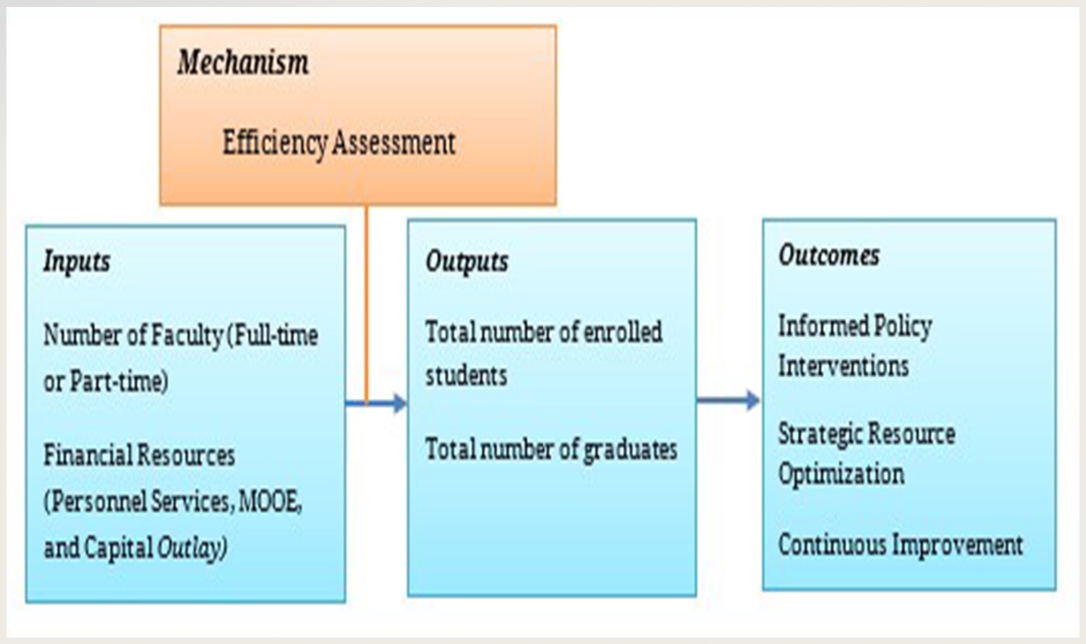Technical efficiency of State Universities and Colleges (SUCs) in the Philippines: A Data Envelopment Analysis (DEA) Approach
DOI:
https://doi.org/10.59120/drj.v15iNo.2.195Keywords:
Efficiency, technical efficiency, higher education, state universities and collegesAbstract
This study utilizes Data Envelopment Analysis (DEA) to evaluate the technical efficiency of 101 State Universities and Colleges (SUCs) in the Philippines. Using panel data from 2017 to 2021, it employs the output-oriented Constant Returns to Scale (CRS) and Variable Returns to Scale (VRS) models of DEA, considering two (2) inputs like faculty numbers and financial resources (personnel services, Maintenance, and Other Operating Expenses or MOOE, capital outlay), and measuring two (2) outputs through the total number of student enrollment and the total number of graduates. The findings reveal that out of the 101 SUCs in Region XI, only eight are deemed efficient under the output-orientated CRS model, whereas 11 are identified as efficient under the VRS model. This variance in results between the 2 DEA models employed can be attributed to their inherent methodologies: CRS tends to yield lower efficiency scores, while VRS tends to produce higher efficiency scores. The findings contribute to discussions on higher education efficiency, providing valuable insights for policymakers, administrators, and stakeholders. The study also lays the groundwork for future research on technical efficiency and productivity factors in SUCs, facilitating targeted interventions and advancements in the Philippines's higher education landscape.
Downloads

Downloads
Published
Issue
Section
License
Copyright (c) 2024 Maria Christina B. Condez

This work is licensed under a Creative Commons Attribution-NonCommercial 4.0 International License.
DRJ is an open-access journal and the article's license is CC-BY-NC. This license allows others to distribute, remix, tweak, and build on the author's work, as long as they give credit to the original work. Authors retain the copyright and grant the journal/publisher non-exclusive publishing rights with the work simultaneously licensed under a https://creativecommons.org/licenses/by-nc/4.0/.









